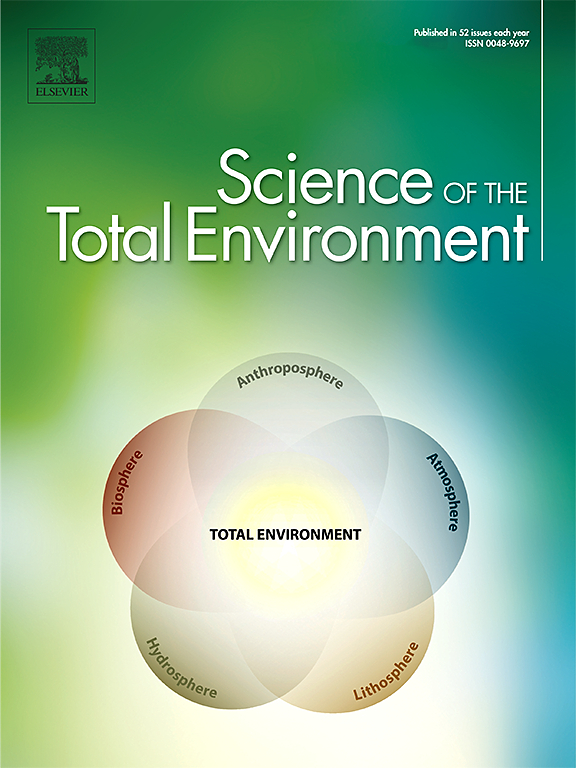Unravelling the anthropogenic pressures in deep waters of the N Iberian Peninsula in the last centuries through the study of sediment cores
IF 8.2
1区 环境科学与生态学
Q1 ENVIRONMENTAL SCIENCES
引用次数: 0
Abstract
The greatest degradation of marine ecosystems has occurred in the last two centuries, coinciding with changes in economic and production models such as the industrialisation. We reconstructed the recent history (last centuries) of marine pollutants (metals and microplastics) in the deep sea of the NW Mediterranean and the Cantabrian Sea (NE Atlantic), analysing 8 sites (cores) at depths between 87 and 1151 m with different levels of terrestrial/oceanic influence. The 210Pb dating showed higher sedimentation rates (MAR) in the upper slope and/or closer to the mainland (0.063–0.078 g/cm2/yr off Barcelona; 0.107 g/cm2/yr in Mallorca at 420 m depth) than in deeper and more open marine stations (MAR = 0.054–0.035 g/cm2/yr), including the Valencia seamount (VS). In terms of metal pollution history, Hg and Pb were good markers of industrial activity, at all stations, including those at 1100–1150 m off Mallorca and on the VS summit. As (arsenic) peaked in the late 19th-early 20th centuries, due to the use of coal as a fuel in steamboats. The role of other metals (e.g. V, Cr, Cd, or Cu) is interpreted locally, depending on the type of industry developed in each area. The rapid and widespread emergence and use of microplastics also made them a good historical marker for sediments. The lithogenic metals Li and Al were good tracers of natural changes (freshwater input, precipitation regime) as their concentration in deep sediments is linked to advective fluxes reaching the seafloor. Both showed a general decline after the middle of the 20th century (1960s), due to a reduction in rainfall and river discharge, as well as an increase in river damming. The observed changes can therefore be explained by a combination of natural variability and the impact of human activities

求助全文
约1分钟内获得全文
求助全文
来源期刊

Science of the Total Environment
环境科学-环境科学
CiteScore
17.60
自引率
10.20%
发文量
8726
审稿时长
2.4 months
期刊介绍:
The Science of the Total Environment is an international journal dedicated to scientific research on the environment and its interaction with humanity. It covers a wide range of disciplines and seeks to publish innovative, hypothesis-driven, and impactful research that explores the entire environment, including the atmosphere, lithosphere, hydrosphere, biosphere, and anthroposphere.
The journal's updated Aims & Scope emphasizes the importance of interdisciplinary environmental research with broad impact. Priority is given to studies that advance fundamental understanding and explore the interconnectedness of multiple environmental spheres. Field studies are preferred, while laboratory experiments must demonstrate significant methodological advancements or mechanistic insights with direct relevance to the environment.
 求助内容:
求助内容: 应助结果提醒方式:
应助结果提醒方式:


